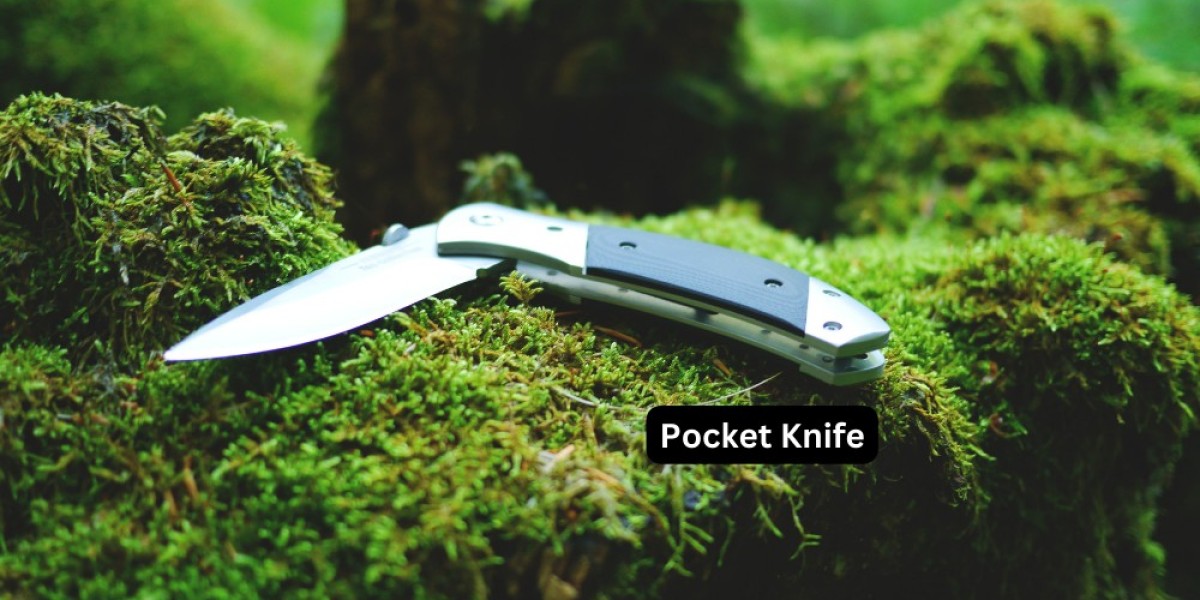A pocket knife is a compact and versatile tool that has been a staple in outdoor adventures, everyday carry (EDC), and survival situations for centuries. Whether you’re a seasoned outdoorsman, a hobbyist, or someone looking for a reliable everyday tool, a pocket knife offers numerous benefits. From utility and durability to self-defense and convenience, these compact blades have a long history of serving diverse purposes. In this guide, we’ll explore everything you need to know about pocket knives—from their history and types to choosing the right one, proper care, and their various uses.
History of Pocket Knives
Pocket knives have a rich and storied history that dates back thousands of years. The concept of a folding blade originated in the Bronze Age when early humans crafted small, portable tools. However, the modern pocket knife we recognize today began to take form in the 17th and 18th centuries, particularly in Europe. Early designs featured simple folding mechanisms, often with a single blade. These knives were primarily used by farmers, hunters, and craftsmen due to their practicality and convenience.
By the 19th century, innovations such as multi-blade configurations and lock mechanisms became more common, increasing the versatility and utility of pocket knives. The iconic Swiss Army Knife, introduced by Victorinox in 1897, revolutionized the industry with its multi-function design, including tools like screwdrivers, can openers, and scissors. Today, pocket knives are available in countless designs, catering to a wide range of preferences and uses.
Types of Pocket Knives
Pocket knives come in various types, each designed for specific tasks and preferences. Below are the most common types:
1. Traditional Folding Knives
- Definition: Traditional folding knives typically feature one or two blades that fold into the handle, making them compact and easy to carry.
- Uses: Ideal for everyday tasks such as cutting rope, opening packages, and general maintenance.
- Examples: Classic Swiss Army Knife, Buck 110, and Case Trapper.
2. Tactical Knives
- Definition: Tactical knives are designed for heavy-duty use, often featuring features like sturdy construction, one-handed opening mechanisms, and enhanced durability.
- Uses: Suitable for outdoor survival, self-defense, and heavy-duty tasks.
- Examples: Spyderco Paramilitary 2, Kershaw Blur, and Benchmade Griptilian.
3. Multi-Tool Knives
- Definition: These are pocket knives equipped with various tools like screwdrivers, bottle openers, scissors, and more.
- Uses: Perfect for campers, hikers, and people needing all-in-one functionality.
- Examples: Swiss Army Knife, Leatherman Wave, and Gerber Multi-Plier.
4. EDC (Everyday Carry) Knives
- Definition: EDC knives are designed to be lightweight, durable, and versatile for everyday tasks.
- Uses: Popular among urban dwellers, campers, and hikers, used for opening packages, cutting food, and general utility.
- Examples: CRKT Minimalist, Benchmade Bugout, and ZT 0566.
Choosing the Right Pocket Knife
Selecting the right pocket knife depends on your intended use, personal preferences, and budget. Here are some key factors to consider:
1. Blade Material
- Types: Common blade materials include stainless steel, carbon steel, and high-carbon stainless steel.
- Considerations: Stainless steel offers corrosion resistance, while carbon steel tends to hold an edge longer but requires more maintenance.
2. Blade Shape
- Popular Shapes: Drop point, clip point, spear point, and tanto.
- Uses: Different blade shapes are suited for specific tasks—drop point for general utility, clip point for precision, and tanto for piercing.
3. Handle Material
- Materials: Common handle materials include wood, metal, plastic, and various composite materials.
- Considerations: The handle should be comfortable to grip, durable, and resistant to wear and tear.
4. Lock Mechanism
- Types: Lockback, liner lock, frame lock, and slip joint.
- Uses: A locking mechanism ensures safety and prevents the blade from folding unexpectedly.
5. Size and Weight
- Considerations: A larger blade may offer more utility but be bulkier to carry, while smaller, lightweight knives are more convenient for EDC.
Uses of a Pocket Knife
Pocket knives are remarkably versatile tools, serving a wide range of purposes. Here are some common uses:
1. Everyday Tasks
- Cutting rope, opening packages, or adjusting small hardware.
2. Outdoor Adventures
- Hiking, camping, fishing, and hunting—used for food preparation, building shelters, or repairing gear.
3. Survival Situations
- A pocket knife can be essential in survival scenarios, aiding in tasks like building shelters, self-defense, and creating fire.
4. DIY and Home Projects
- Useful for tasks like woodworking, repairing furniture, or performing quick household fixes.
5. Self-Defense
- Tactical knives designed for defense offer a discreet yet effective means of protection in critical situations.
Care and Maintenance
Proper care and maintenance are crucial to ensure the longevity and performance of your pocket knife.
1. Cleaning
- After each use, clean the blade and handle with soap and water, then dry thoroughly to prevent rust.
2. Sharpening
- Regularly sharpen the blade using a sharpening stone or other tools to maintain optimal cutting performance.
3. Lubrication
- Apply a few drops of lubricant to moving parts (such as the pivot point) to keep the mechanism smooth.
4. Storage
- Store your knife in a dry, secure place to prevent moisture damage and ensure the blade remains sharp.
Conclusion
A pocket knife is more than just a tool—it’s a reliable companion for countless activities and adventures. Whether you need a simple folding knife for everyday carry, a rugged tactical blade for outdoor exploration, or a multi-tool for all-in-one functionality, there’s a pocket knife to suit every need. By understanding their history, types, and uses, you can select the right pocket knife that fits your lifestyle and ensures you’re always prepared. With proper care, your pocket knife will serve you well for years to come, ready to tackle whatever challenges come your way.









